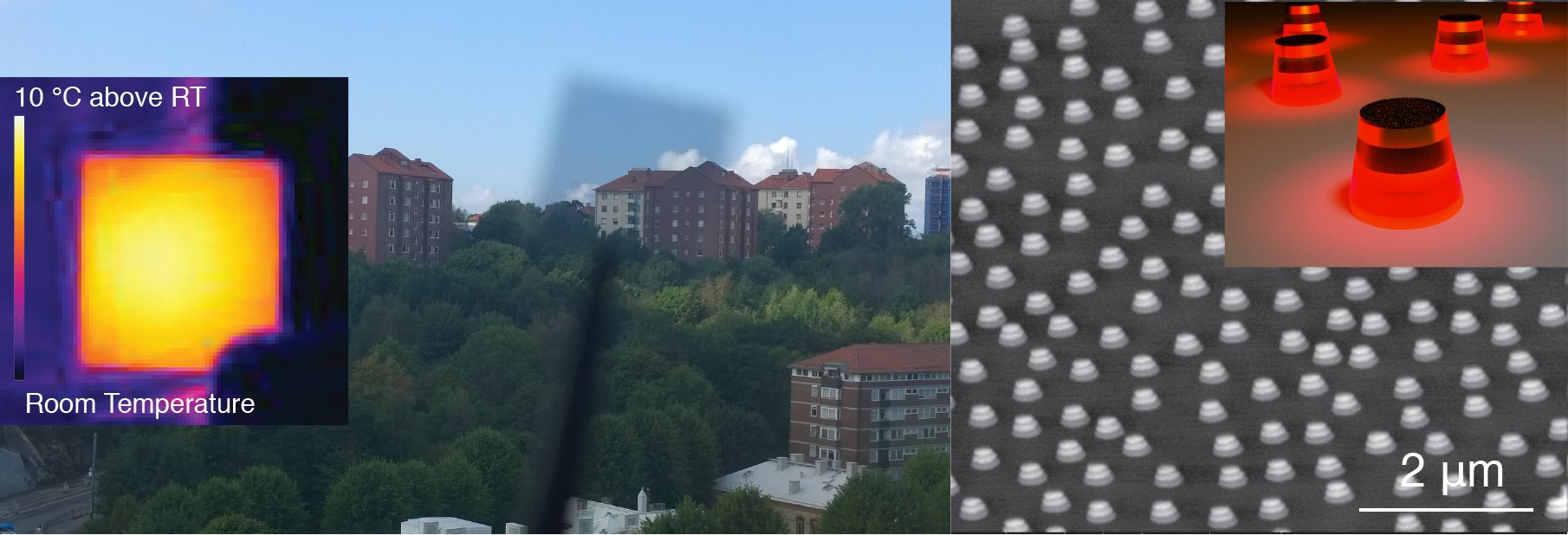
The large glass surfaces that are popular in modern architecture pose a challenge to energy efficiency and the maintenance of a comfortable indoor climate.
The problem is that when the indoor temperature is 20°C and the outdoor temperature is 0°C, the temperature of a typical window is only 16°C, implying a continuous cooling effect on the indoor air.
‘If we look at the average temperatures of the walls, ceilings, floors and windows, we want the temperature of the window glass to be as close to the temperature of the indoor air as possible to avoid a cooling effect,’ says Alexander Dmitriev, professor of physics at the University of Gothenburg.
In cold weather, regular window glass stays cold even if it is exposed to direct sunlight. The big challenge has been to design windows that can let all of the light through without cooling the indoor air.
New, Warmer Windows
Dmitriev and his team hypothesised that the problem could be solved by using nanotechnology to heat the windows.
 ‘Windows need to be transparent and shouldn’t change the colours of indoor objects. So we created so-called nanoantennas. The nanoantennas absorb sunlight and generate oscillating electrons that heat the glass, and all of this is done while maintaining transparency and a colour rendering index of close to 100 per cent.’
‘Windows need to be transparent and shouldn’t change the colours of indoor objects. So we created so-called nanoantennas. The nanoantennas absorb sunlight and generate oscillating electrons that heat the glass, and all of this is done while maintaining transparency and a colour rendering index of close to 100 per cent.’
The researchers used nickel, a cheap and abundant metal, to make the nanoantennas and then covered the glass with them.
‘We have already been able to make the glass more than eight degrees warmer in direct sunlight. By optimising the antennas, we should be able to make them even more effective,’ says Dmitriev.
Using Glass as Thermal Screens
The nanoantennas are easy to make and can cover very large areas. In the future, the researchers are aiming to turn entire glass facades into thermal shields that will keep the heat inside the buildings and thus help save huge amounts of energy.
Another useful feature is that the two sides of the new type of glass respond differently to sunlight.
‘As a result, by turning the windows inside out, they can be used as sun reflectors instead of heat radiators,’ says Dmitriev.
The new type of window glass was developed by Alexander Dmitriev’s team at the University of Gothenburg and Chalmers University of Technology in collaboration with Magnus P. Jonsson’s team at Linköping University.
More information: Gustav Jӧnsson et al. ‘Solar Transparent Radiators by Optical Nanoantennas.’ Nano Letters. DOI: 10, 1021 / ac. Nanolett.7b02962
Contact information:
Alexander Dmitriev, professor at the Department of Physics, University of Gothenburg, alexd@physics.gu.se, +46 70 842 3819
Photo:
Top: Glass surface with antennas (left), and heat camera image of the glass; nanoantennas with electron microscopy (right), and 3D model of how thermal antennas work/spread heat across a surface.
Portrait picture of Alexander Dmitriev,

 ‘Windows need to be transparent and shouldn’t change the colours of indoor objects. So we created so-called nanoantennas. The nanoantennas absorb sunlight and generate oscillating electrons that heat the glass, and all of this is done while maintaining transparency and a colour rendering index of close to 100 per cent.’
‘Windows need to be transparent and shouldn’t change the colours of indoor objects. So we created so-called nanoantennas. The nanoantennas absorb sunlight and generate oscillating electrons that heat the glass, and all of this is done while maintaining transparency and a colour rendering index of close to 100 per cent.’